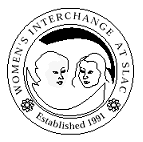H-NET BOOK REVIEW :
Published by H-Pol@h-net.msu.edu
(August, 2000)
S. J. Kleinberg. Women in the United States, 1830-1945.
New Brunswick, NJ: Rutgers University Press, 1999. xii + 368 pp. Tables,
bibliography and index. $52.00 (cloth), ISBN 0-8135-2728-7; $22.00 (paper), ISBN
0-8135-2729-5.
Reviewed for H-Pol by Melanie S. Gustafson <mgustafs@zoo.uvm.edu>,
Department of History, University of Vermont
The aim of this work, writes author S. J. Kleinberg, is to
provide "a general introduction to the history of women in industrializing
America" and demonstrate the "female component of the grand forces
shaping American life: the commercialization of agriculture, urbanization,
industrialization, the demographic transition, immigration, slavery, and the
westward movement" (pp. 4-5). To order such a large history, Kleinberg has
chosen to divide this long chronology, from 1830 to 1945, into three parts:
"Ante-bellum America," "The Industrial Era," and "From
the Vote to World War II." Each part has four separate chapters covering
economics, family and demographics, education and culture, and reform and
politics. These are the "main threads women wove together to form the
fabric of their lives" (p. 5). Within each chapter are distinct subthemes
to emphasize the diversity of women's experiences and highlight individual
stories. A short epilogue provides a broad synopsis of the post-World War II
era.
Each of the three parts of the book begins with an overview of
the economic picture of the United States in the era being covered. A discussion
of basic shifts and variations in work patterns and everyday living reveals the
gendered patterns of the economy, as does an examination of more complex changes
in demography and ideology. Individual life stories lead into brief analyses of
larger societal changes, while introductions to grand transformations lead back
to personal histories. Woven into the story that Kleinberg tells are
introductions to and short analyses of the arguments of influential individual
scholars. These do not overwhelm the flow of the narrative; instead they add
substance to the text.
An extensive bibliographical essay divided by chapters rather
than endnotes within chapters may have seemed the most logical solution for
citing the large literature available for the study of U.S. women's history.
However, this decision gives Kleinberg's history the feeling of a textbook when
it is, in fact, more than that. It is an attempt to create a synthesis of the
differing histories of women in the United States, and this is both its
shortcoming and achievement. As someone who has been mandated with the job of
teaching undergraduates "The History of U.S. Women" in a one-semester
course, I understand the problems of selection and emphasis when attempting to
create a cohesive and usable narrative of women's history. If I was to use this
book for a class, and it is very appropriate for an undergraduate, or even
introductory graduate, class, I would discuss the complexities of historical
selection and historical significance. Doing so would help students see the
shortcomings of narratives and the achievement of Kleinberg's book. Kleinberg
consistently concentrates on explaining how the enormous economic, societal, and
political changes in the United States had a profound impact on the gendered
order of the United States and how these factors also had differing consequences
for different groups of women.
That Kleinberg's history is driven by an economic picture may
be the book's greatest usefulness for teachers, students and scholars, all of
whom will find the writing accessible and the use of scholarly sources sound and
current. Those looking for an alternative narrative approach that is infused
with scholarly analysis might want to examine Karen Anderson's _Changing Woman:
A History of Racial Ethnic Women in Modern America_.[1] Nancy Woloch's _Women
and the American Experience_, now in its third edition, is also a useful text
for the classroom with its pairing of an historical episode with a more general
synthesis of the same era.[2] I have taught both of these texts and my students
have found them engaging and challenging. I expect many more students will have
similar responses to Kleinberg's _Women in the United States_.
Notes
[1]. Karen Anderson, _Changing Woman: A History of Racial
Ethnic Women in Modern America_. New York: Oxford University Press, 1996.
[2]. Nancy Woloch, _Women and the American Experience_, 3rd
edition, Boston: McGraw-Hill, 2000.
Copyright (c) 2000 by H-Net, all rights reserved. This work
may be copied for non-profit educational use if proper credit is given to the
author and the list. For other permission, please contact H-Net@h-net.msu.edu.

